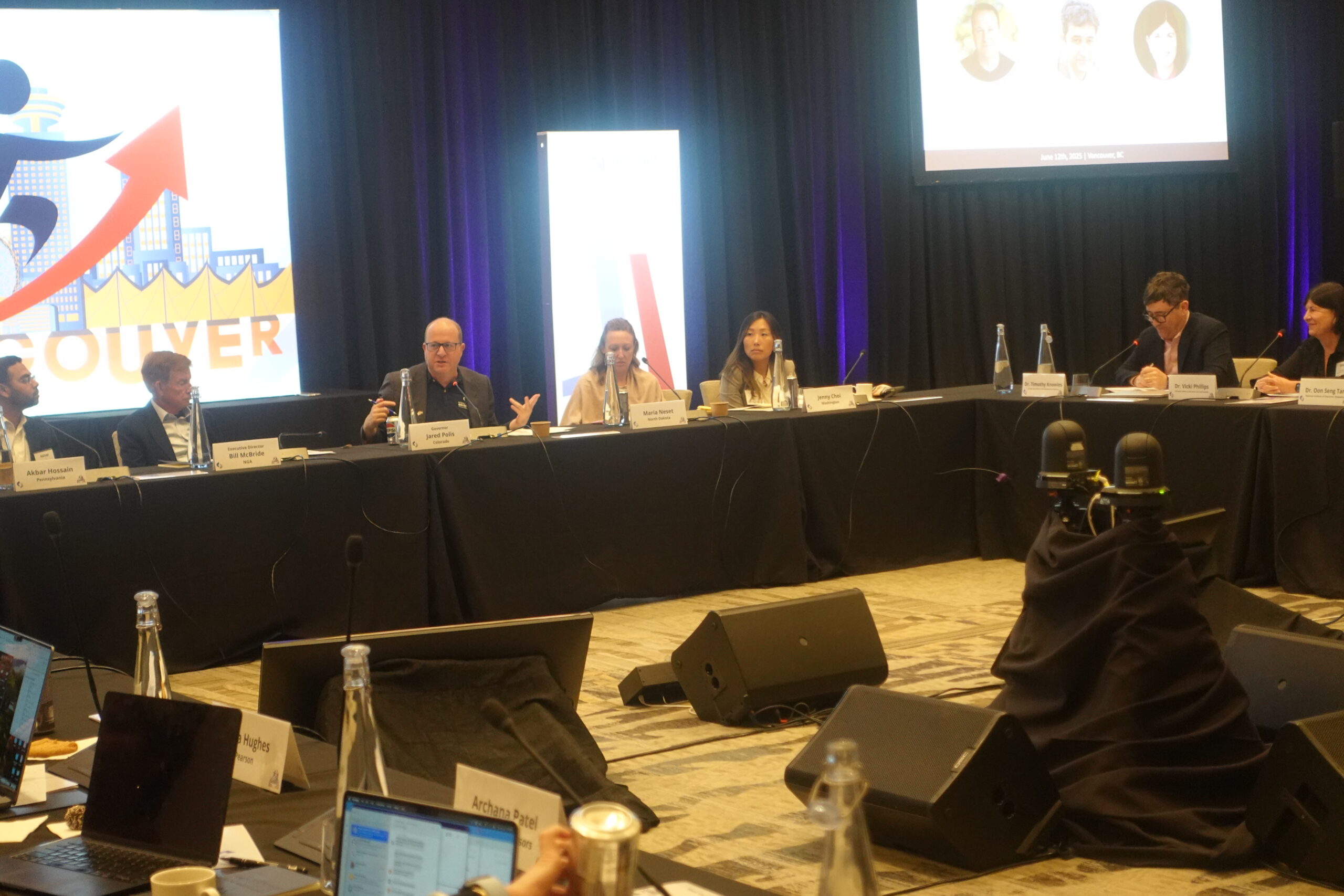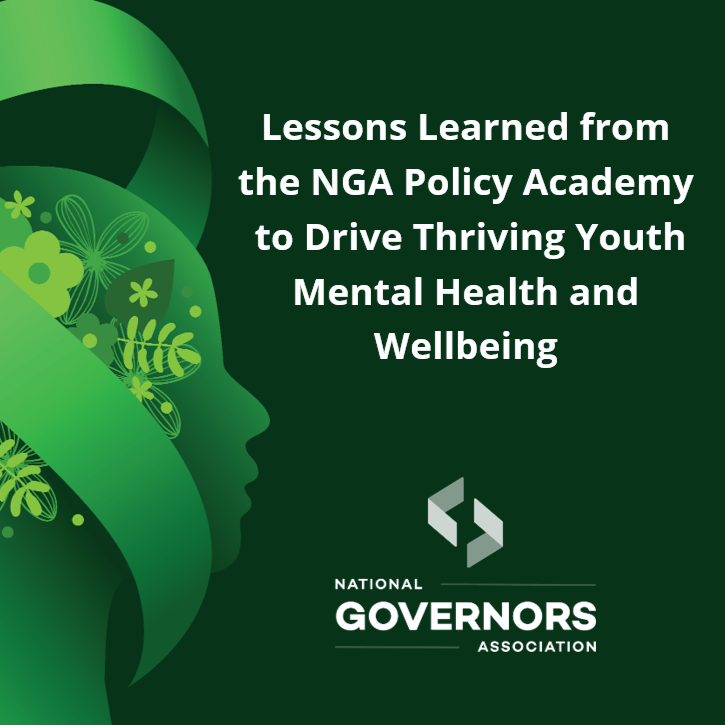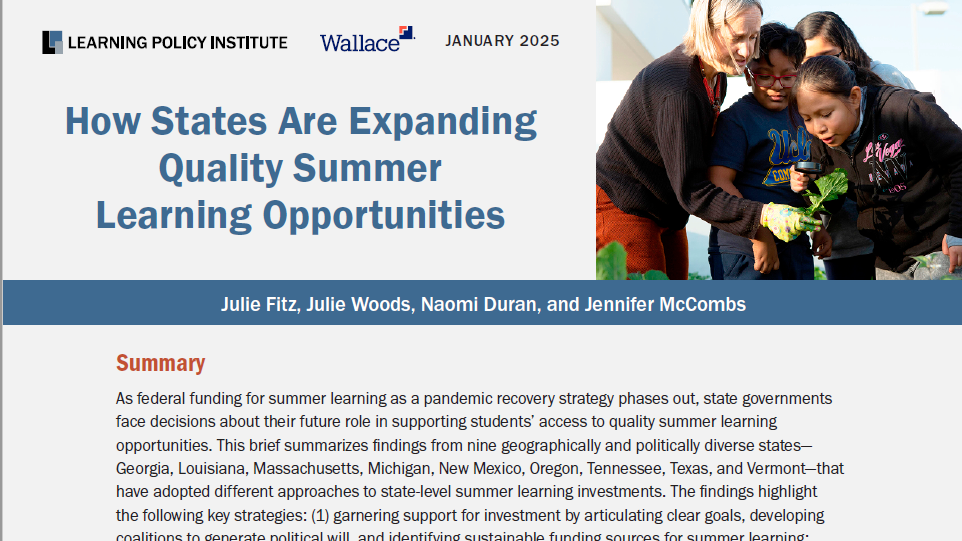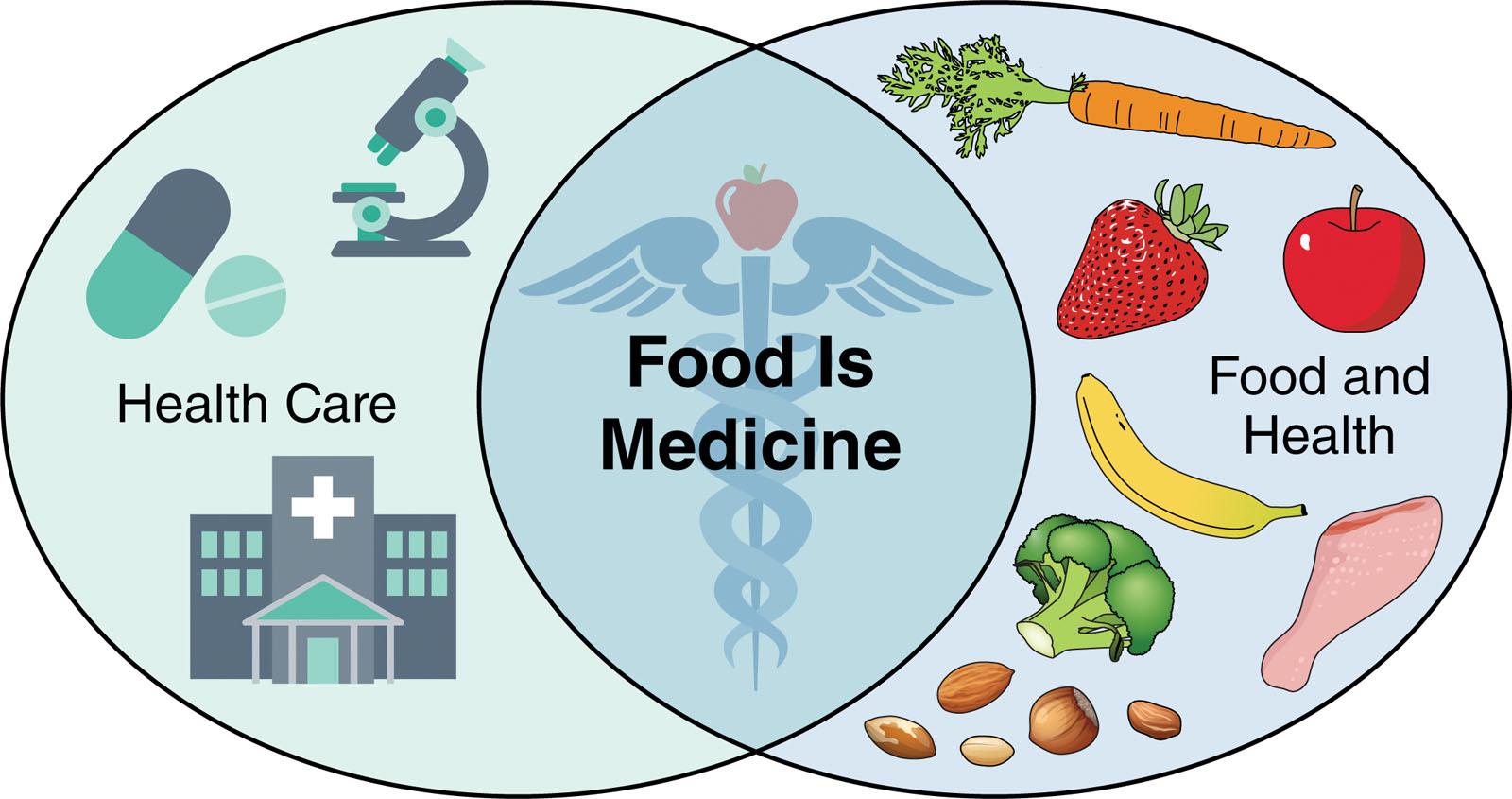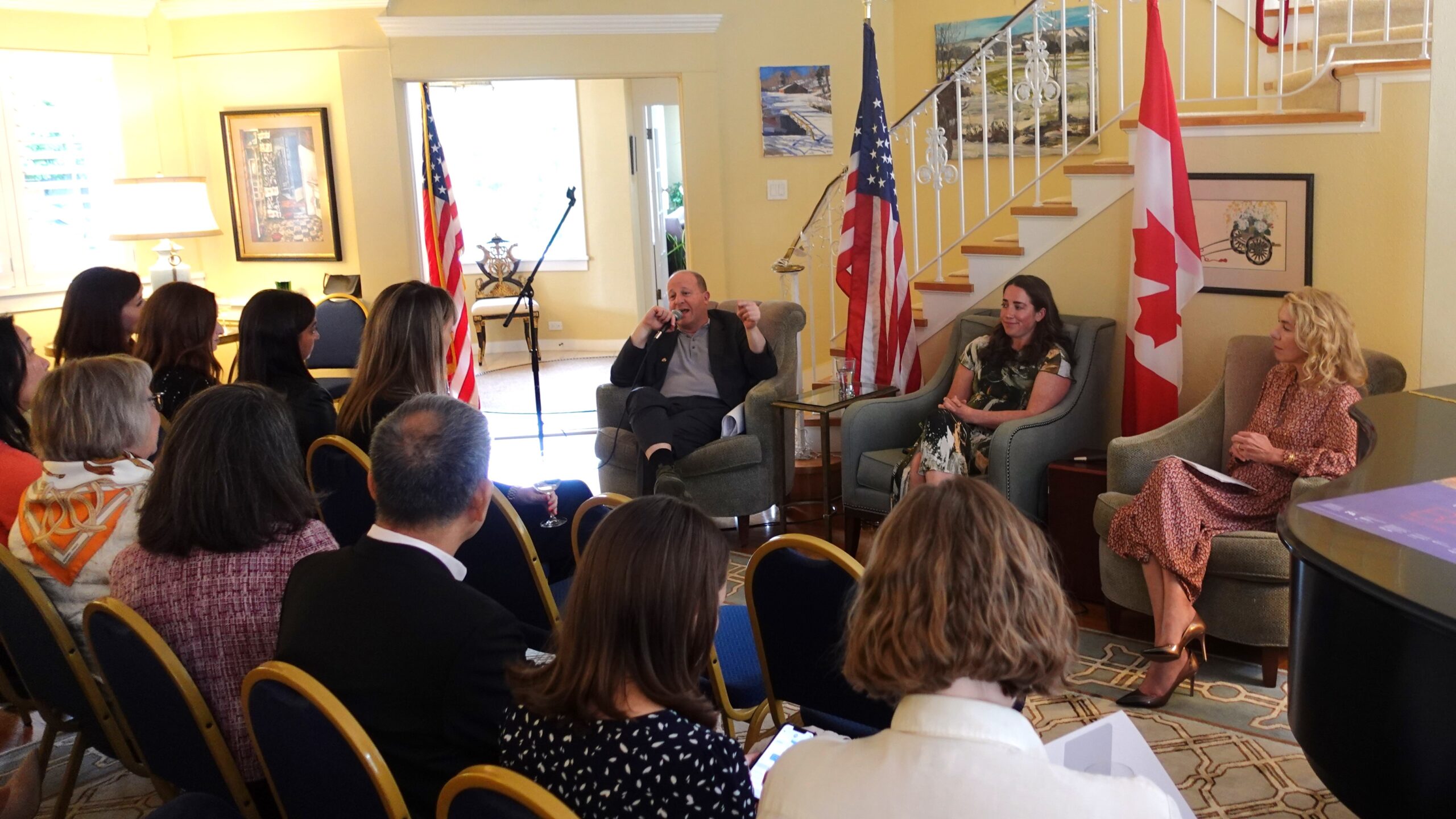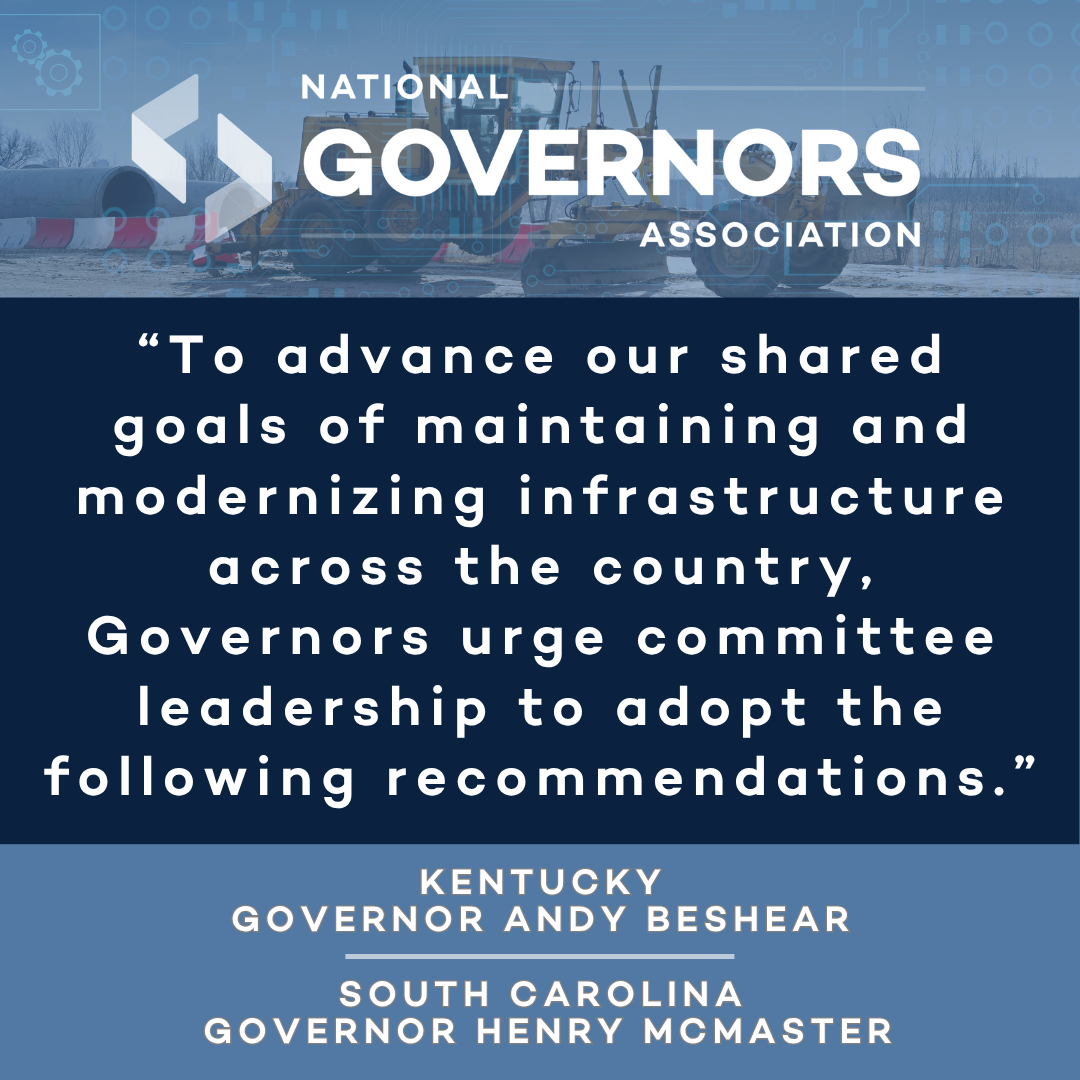At the 2024 Governors’ Education Policy Advisors Institute in Birmingham, Alabama, Governor’s advisors were honored to be joined by Alabama Governor Kay Ivey. Governor Ivey has been a national leader in education throughout her time in office, and she’s consistently prioritized improving student achievement and aligning K-12 systems with the needs of a 21st century economy. During her tenure in office, the Governor has launched education initiatives on literacy, computer science, civics, numeracy, college and career readiness, and more.
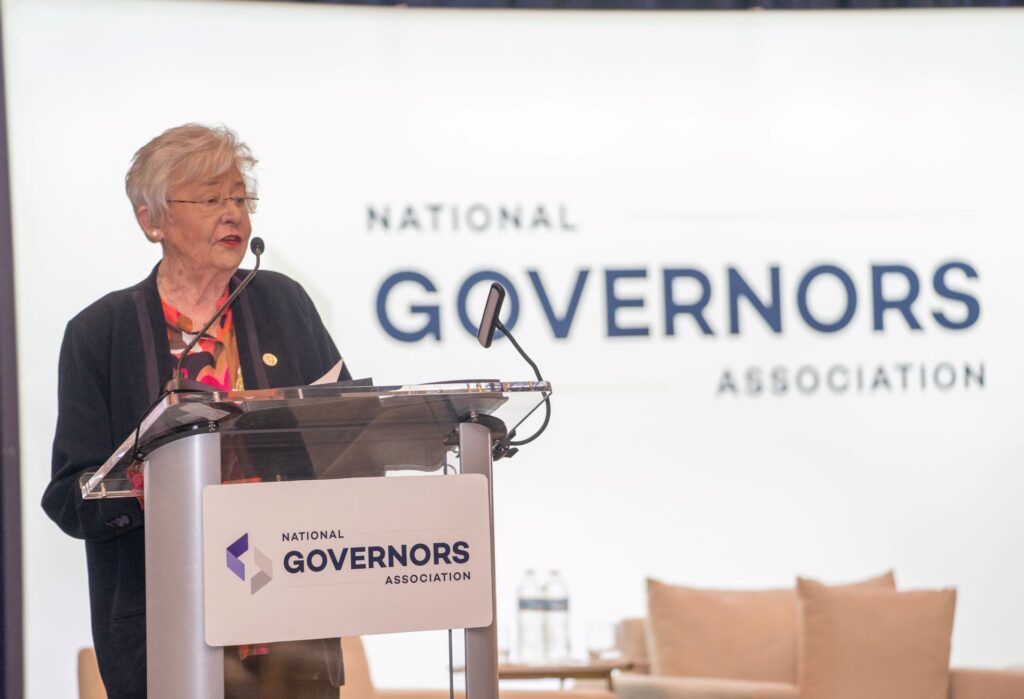
In her opening remarks, Governor Ivey stated that education is her No. 1 priority as Governor and shared a few of her administration’s achievements, including:
- Signing the largest education budget in Alabama history;
- Increasing teacher pay by 24 percent;
- Investing in school leadership training;
- Developing successful new math and reading initiatives; and
- Implementing the Turnaround School initiative to ensure that no elementary schools are classified as failing.
“A quality education in America is every person’s ticket to success, and this is the key to keeping the American Dream alive. Whether you are a Republican or Democrat, we can all agree that Americans should have access to an education that prepares them for success in life.“
Alabama Governor Kay Ivey
Education in the States
Governor Ivey’s remarks were the perfect introduction to the first panel of the Institute, which provided a look at NGA Chair Colorado Governor Jared Polis’ Let’s Get Ready: Educating All Americans for Success initiative, and how states and territories are working to make sure that our public education systems are delivering for students. Tammi Hiler, Governor Polis’ Special Advisor for Early Childhood and K-12 Policy, led a conversation with
- Kate Donaghey, Undersecretary and Chief of Staff at the Executive Office of Education for Governor Healey;
- Emily Anne Gullickson, Deputy Secretary of Education, Office of Virginia Governor Glenn Youngkin; and
- Nick Moore, Education Policy Advisor and Director, Office of Alabama Governor Kay Ivey
Hiler noted Governor Polis’ education background, starting his political career as a State Board of Education member in Colorado and serving on the Education and Labor Committee throughout his tenure in the U.S. Congress. Governor Polis ran on a platform of improving education, and Hiler listed many of the administrations’ accomplishments including full day free kindergarten and the first ever universal preschool program—which saw over 64% of all eligible four-year-olds participate in its first year. Hiler stressed the Governor’s commitment to figuring out how to better blur the lines between high school, post-secondary education and the workforce – with the administration investing in opportunities for students to take concurrent enrollment courses and participate in work-based learning experiences, like apprenticeships, before they graduate.
Governor Polis’ Let’s Get Ready initiative is designed to further the Governor’s passion for improving education, ensuring that any individual learner that goes through our education systems exits with the knowledge and skills to live successful lives. From an economic perspective, the initiative aims to ensure students have the skills they need to fill workforce and industry needs. Hiler then turned to Nick Moore for insights on Alabama’s education efforts.
Moore opened by noting the reality facing most Governors’ Education Policy Advisors: Depending on the political structure of their state or territory, advisors may have only 18 months to three years to accomplish their goals. Often it is a question of picking one initiative to implement and sustain. By contrast, Governor Ivey will be Alabama’s longest consecutively serving governor by the end of her second full term, and so they have had “a long runway of almost 10 years by the time we’ll be finished.” That runway has allowed Governor Ivey’s team to focus on a complete education to workforce transformation, which looks at education, workforce, economic and human services systems as a talent development system. Governor Ivey launched the Strong Start, Strong Finish initiative in 2017 to fill in gaps beginning with the earliest years of learning through post-secondary education and employment. Moore concluded his remarks with a reminder that by blurring the lines between learning and working, we can make sure kids are prepared as systems focus more on competency-based and skills-based learning and hiring.
Kate Donaghey opened her remarks saying that as an “education-focused Governor,” Massachusetts Governor Healy has launched a number of education initiatives. Some of the commonwealth’s priorities are initiatives aiming to transform the early education system, like the Gateway to Pre-K agenda – which will offer universal, high quality pre-k to all 4-year-olds in Gateway cities by 2026 – and the Literacy Launch program – a five-year, $150 million investment focused on age 3 through grade 3. Massachusetts is also focused on adopting a whole of government approach to enhancing childcare affordability and accessibility. On the higher education side, Donaghey highlighted Massachusetts’ comprehensive free community college program, including MassReconnect, which has increased community college enrollment by 45 percent so far.
Virginia Governor Youngkin’s top priority is “restoring high expectations,” said Emily Anne Gullickson. A few of Virginia’s priorities include: overhauling state standards, establishing a culture of innovation from early childhood to higher education; developing new school models known as “lab schools”; cutting red tape that often “ties educators’ hands”; fostering critical thinking skills; supporting youth mental health through programs like Right Help, Right Now; developing a comprehensive birth through age 5 public/private marketplace of early learning and child care options; and launching the Building Blocks for Virginia Families program, which invests resources toward supporting high-need households.
“Education tends to be the largest expenditure in a state. In Colorado, it’s about 25% of our state budget, and because of that, Governors really do have a responsibility to make sure that our public education systems are delivering for students.”
Tammi Hiler
Measuring Student Readiness
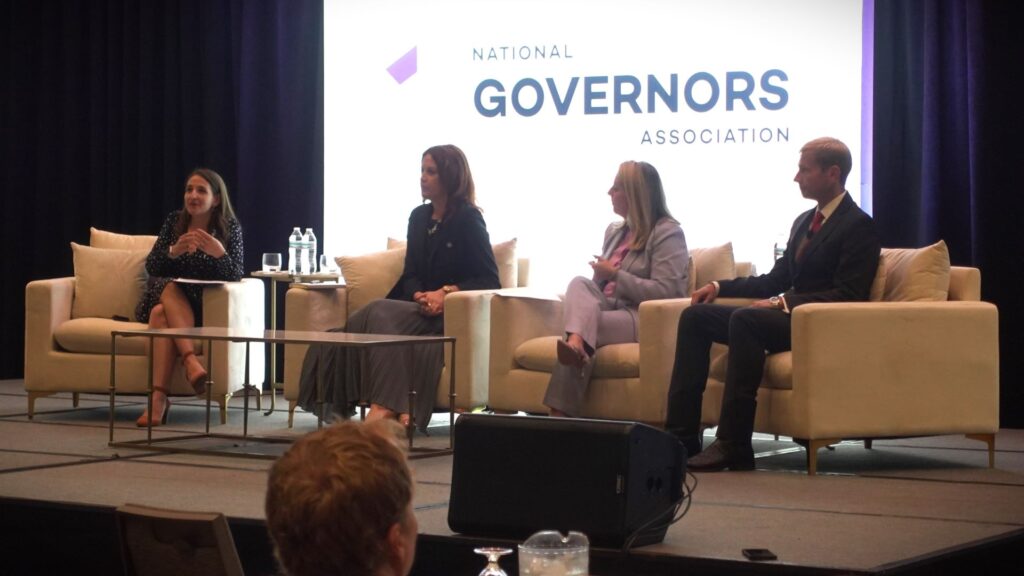
Hiler teed up the discussion by noting that education leaders are working to challenge assumptions about what really moves the needle at different points, from early education to K-12 to higher education. Where once simply earning a diploma was considered a mark of readiness for college or career, educators are digging deeper to define what “readiness” means – and how to measure it.
The panelists all agreed on the importance of measuring outcomes, not inputs. Each speaker outlined significant resources their states are devoting toward overhauling their data collection and improving data- sharing between agencies. Gullickson shared steps Virginia is taking to shift from using diplomas to assess readiness to a model based on “earning” – whether that’s a college credit, proficiency on military metrics or earning a workforce credential for a high demand job. Similarly, Massachusetts is working to ensure high school is an opportunity to explore career pathways and gain workforce readiness skills – launching a program in which students can earn credentials in growing fields like wind energy. Moore noted that schools are experiencing “initiative fatigue” from input-based improvement models. That reality is driving Alabama’s shift to focus on new empirical models for teacher observation, while using student formative data to drive instructional practice. Speakers also cited initiatives to: ensure student testing is more responsive, interactive and language-appropriate; train principals to be instructional leaders; ensure high quality instructional materials; and invest in mental health resources that serve the whole child.
“Just like Virginia and other states have done, we’ve invested in state longitudinal data system and also internal agency data stewardship so that we don’t have trepidation about the use of sharing administrative data, that we want to own a culture of data, and that agency heads understand that when they come to the governor and the legislature, they have to have an outcome based approach to their budget.”
Nick Moore
Sustaining Education Initiatives
Passing big education initiatives isn’t always the hardest part, Hiler noted. Actually sustaining those initiatives is “where the rubber meets the road.” But how to do you know what’s working, and how can you sustain progress beyond your Governor’s term?
Stakeholder buy-in is key in Massachusetts, Donaghey said. She explained that parents, students, the business community and others were consulted over two years to develop the Literacy Launch initiative, and these groups helped design the program from the ground up.
The composition of the Virginia state legislature requires bipartisanship, Gullickson explained, which leads to positive collaboration and commonsense approaches. Building on that, the Governor’s team focuses on being intentional with Board of Education appointments, budgets and executive orders – all of which outlast any one administration and can foster lasting progress – building common structures educators can benefit from outside the four-year gubernatorial cycle. Leveraging outside partners is also essential, Gullickson said, citing a collaboration with Old Dominion University, which houses the administration’s lab school network.
Moore cited Governor Ivey’s goal to increase Alabama’s labor force participation rate by 1 percent. Keeping with the theme of avoiding approaches that “confuse efforts for results,” Moore described Alabama’s strategy for optimizing funds received through the federal Workforce Innovation and Opportunity Act (WIOA) to go beyond federal requirements and use data to increase effectiveness.
“I think one of the biggest things in the Healey-Driscoll administration is having a comprehensive stakeholder engagement process. In order to ensure continuity of educational services, you have to start with the buy-in process; you have to get the right people at the table to ensure that everyone’s on the same page and working toward the common goal.”
Kate Donaghey
Using Data for Excellence and Efficiency
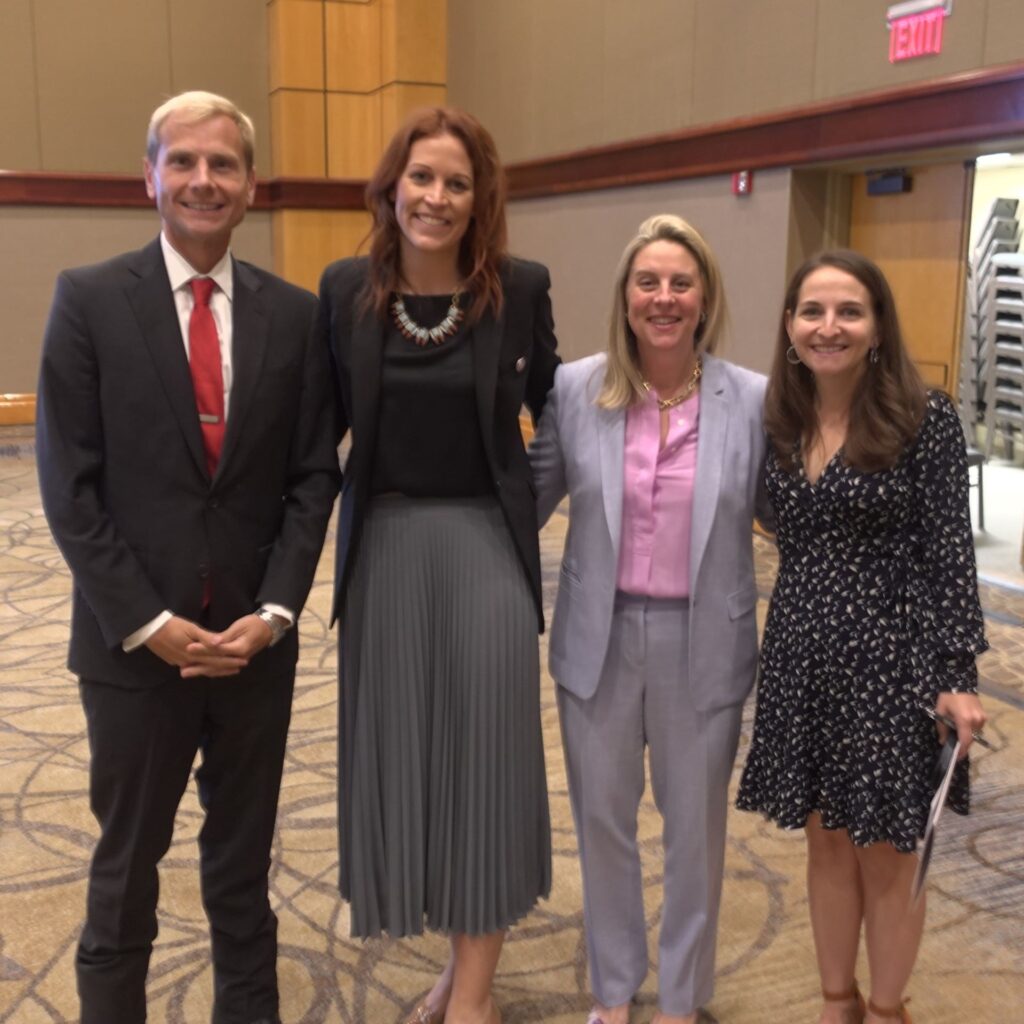
With better metrics, states can identify what’s working so they can scale and sustain progress, Hiler stated. But data also identifies programs that aren’t effective. Moore acknowledged that it’s hard to eliminate a budget line item once it’s established, but a Governor’s leadership can be important to halt ineffective programs. How can states use data to drive decision-making – and have the courage to stop doing things that aren’t working?
When data revealed 1 in 5 students are chronically absent, Virginia leaders were shocked, Gullickson shared. But the finding spurred action, driving new policies and shifting funding approaches under the ALL IN Virginia initiative, in which the ‘a’ stands for attendance. By embedding “a culture of data-sharing,” Virginia drew on a wide variety of data, including transportation data, to identify who was missing school, and what their “personalized barriers” are – whether transportation gaps, food gaps, or mental health care gaps.
Massachusetts also launched a data-driven program targeting absenteeism, titled Your Presence is Powerful. Another example Donaghey cited involves a longstanding reading program. Although the program received significant funds, data showed it wasn’t working. “It took a lot of data” to spur change, Donaghey said. But, in coordination with the legislature, the administration was ultimately successful in shifting those resources to high quality instructional materials.
Wrapping up the session, Hiler summarized not only the discussion but the central concept of Let’s Get Ready: “When you create the conditions in your state to have metrics and a data-rich culture, it creates an environment in which these difficult conversations can happen. But it also actually promotes innovation. We want to be able to continue to innovate and try new things. But we also need to be able to say ‘You know what? That didn’t work,’ so we’re going to pivot because we’re actually using data to inform those decisions.”
“…what was more troubling is our kindergartners, first graders and second graders were our population missing the most school. So that really served as catalyst with our early learning spaces around prioritizing funding based on attendance and not enrollment.”
Emily Anne Gullickson
For more on the 2024 GEPA Institute and Governors’ education efforts please bookmark this page and visit regularly.


